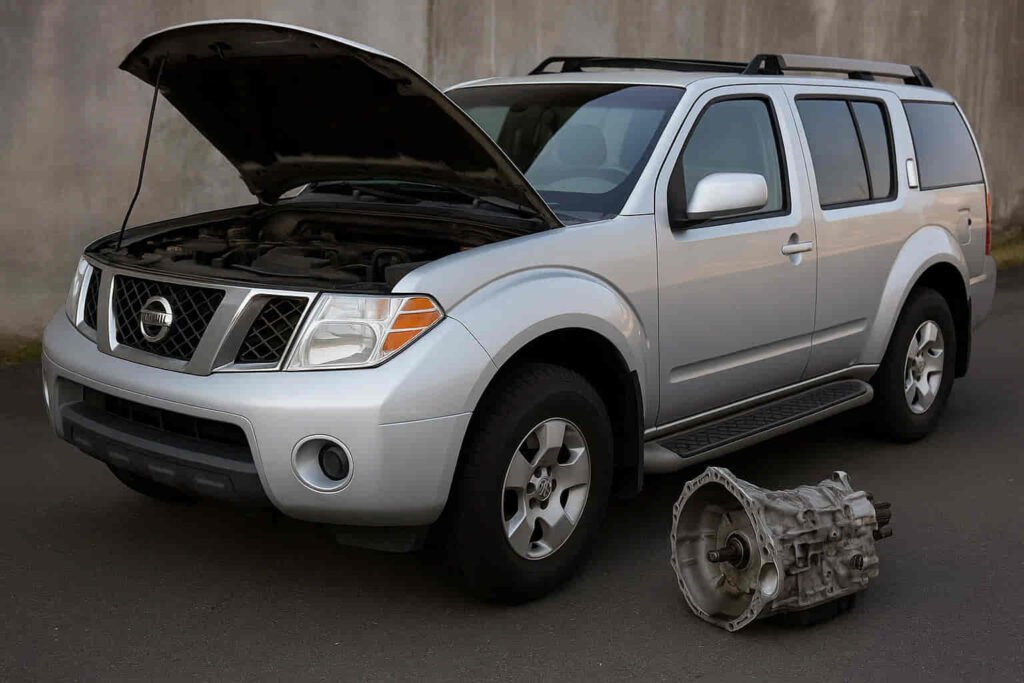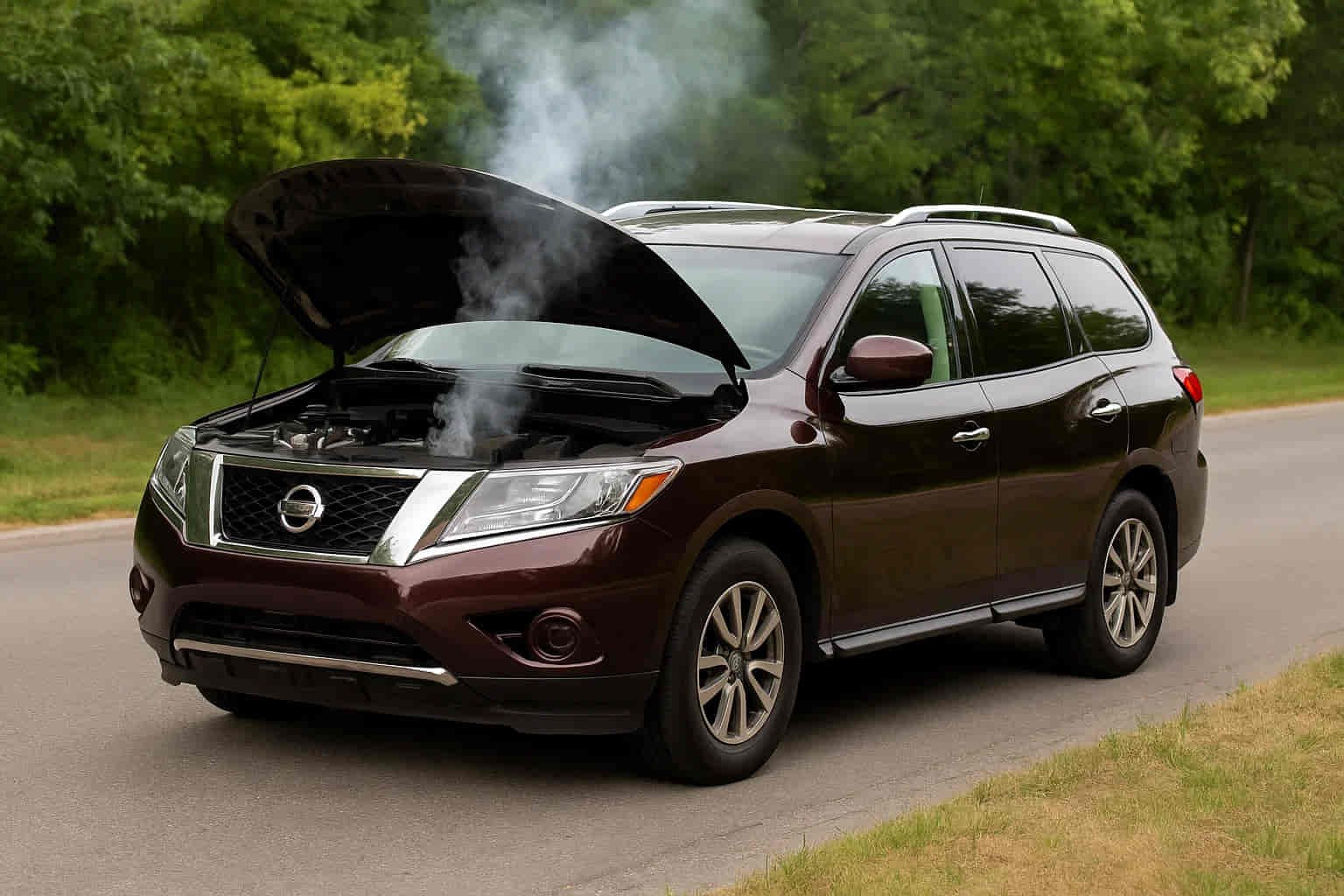The Nissan Pathfinder has long been considered a reliable family SUV, but many owners have faced a recurring concern that overshadows its reputation: transmission problems. In particular, the Pathfinder’s continuously variable transmission (CVT) has been at the center of countless complaints, ranging from slipping gears and jerky acceleration to costly breakdowns that leave drivers frustrated. For those planning to buy a used Pathfinder in 2025—or current owners worried about unexpected repairs—understanding how these transmission issues develop and what solutions exist is more important than ever.
Drivers often describe the symptoms as subtle at first, such as delayed gear engagement or a faint shudder when accelerating. Over time, however, these signs can escalate into major failures that require expensive fixes or even full transmission replacement. The frustration is not only about the mechanical failure itself, but also the financial burden: repairs can cost thousands of dollars, and warranty coverage often comes with limitations.
In this guide, we will take a closer look at Nissan Pathfinder transmission problems, explain the underlying causes, explore practical fixes, and outline the repair costs you can expect in 2025. Whether you already own a Pathfinder or are considering one, knowing what to watch out for could save you both money and stress.
Common Nissan Pathfinder Transmission Problems (2025 Update)
When it comes to the Nissan Pathfinder, transmission complaints are among the most frequently reported issues by owners, and they tend to follow a consistent pattern across different model years. One of the most common concerns is slipping gears, where the transmission fails to maintain smooth power delivery and causes the SUV to feel unsteady on the road. Drivers often describe this as the vehicle “losing power” in the middle of acceleration, which not only reduces confidence but also raises safety concerns in highway conditions.
Another widespread problem is the jerking or shuddering sensation that occurs when accelerating from a stop. This is especially noticeable in city driving or stop-and-go traffic, where the CVT struggles to deliver seamless performance. Overheating is also a recurring theme, with the transmission fluid reaching higher temperatures than it should, which accelerates internal wear and leads to premature failure.
In addition, many Pathfinder owners report delayed gear engagement, where the vehicle hesitates before moving forward after shifting into drive. This hesitation may seem minor at first, but over time it signals deeper issues within the transmission system. Check engine lights triggered by transmission-related error codes are another indicator that the CVT is not functioning as intended.
These recurring Nissan Pathfinder transmission problems are not isolated incidents; rather, they highlight the inherent weaknesses of the CVT design used in this SUV. While some drivers may experience only minor inconveniences, others face severe breakdowns that demand immediate and costly intervention.
Causes Behind Nissan Pathfinder Transmission Issues
The recurring transmission problems in the Nissan Pathfinder are not simply the result of poor maintenance; they are rooted in both engineering design and real-world driving conditions. At the core of the issue is the continuously variable transmission (CVT), which relies on a belt-driven system rather than traditional gears. While this design is intended to improve fuel efficiency and deliver smoother acceleration, it is far more vulnerable to wear, especially when subjected to heavy loads or aggressive driving habits. Over time, the belt and pulleys inside the CVT can deteriorate, leading to the slipping, jerking, and overheating that many owners report.
Another major cause is heat management. The Pathfinder’s transmission system has often been criticized for inadequate cooling, meaning that under stress—such as long drives, towing, or hot climates—the CVT overheats faster than it should. Excessive heat accelerates the breakdown of transmission fluid, which in turn reduces lubrication and increases friction between internal components. Once this cycle begins, the likelihood of major transmission failure grows rapidly.
Manufacturing inconsistencies in specific model years also play a role. Vehicles produced between 2013 and 2016, and even some in 2017, have been linked to widespread complaints and lawsuits, suggesting that design flaws and defective parts were significant contributors. Beyond design and defects, neglecting regular maintenance such as fluid changes further increases the risk. In many cases, owners discover too late that missing a scheduled service interval has made their transmission issues worse, leaving them with few options other than costly repairs.
Together, these causes explain why Nissan Pathfinder transmission problems are both common and persistent, making them a key consideration for anyone driving or purchasing this SUV in 2025.
Fixes & Solutions for Pathfinder Transmission Problems

For Nissan Pathfinder owners dealing with transmission issues, the good news is that not every problem requires a complete replacement. In many cases, timely intervention and proper maintenance can extend the life of the CVT and reduce long-term costs. The first line of defense is often a transmission fluid change. Since the CVT relies heavily on fluid for both lubrication and cooling, fresh fluid can restore smoother operation and reduce overheating. Many mechanics now recommend fluid changes every 30,000 miles instead of the longer intervals suggested in earlier manuals, especially for vehicles exposed to heavy traffic or hot climates.
Software updates also play a crucial role. Nissan has released several patches over the years to address erratic shifting patterns, delayed engagement, and other common complaints. Reprogramming the transmission control module can resolve these issues without the need for mechanical repairs, although not every Pathfinder benefits equally from software adjustments.
When the problems are more severe, targeted repairs may be necessary. Replacing worn components such as valve bodies, pressure sensors, or solenoids can eliminate shuddering and slipping. These partial fixes are less expensive than a full rebuild and often restore the vehicle’s drivability for thousands of additional miles. However, once the internal belt and pulleys are significantly damaged, a complete rebuild or replacement becomes unavoidable. A rebuild allows mechanics to replace only the faulty components, while a brand-new CVT ensures long-term reliability but comes with a much higher price tag.
Preventive solutions are equally important for avoiding future breakdowns. Many Pathfinder owners install aftermarket transmission coolers to improve heat management, particularly if they tow or drive long distances regularly. Adjusting driving habits, such as avoiding sudden acceleration or carrying heavy loads, can also reduce strain on the transmission. By combining proactive maintenance with early intervention, drivers can significantly lower the risk of facing catastrophic transmission failure.
Repair Costs of Nissan Pathfinder Transmission in 2025
One of the most frustrating aspects of owning a Nissan Pathfinder with transmission problems is the financial burden that comes with repairs. By 2025, prices for transmission work have continued to rise due to higher labor rates, more expensive OEM parts, and the complexity of CVT systems compared to traditional automatics. What may start as a minor repair often snowballs into a major expense, leaving owners with difficult decisions about whether to fix or replace their SUV.
At the lower end of the cost spectrum, a simple transmission fluid change can run between $150 and $300, depending on the shop and location. While relatively affordable, it only addresses early-stage issues and is not a long-term solution if the CVT is already showing signs of serious wear. Minor component repairs, such as replacing sensors, solenoids, or a valve body, typically cost between $500 and $1,000. These fixes can buy more time, but they do not eliminate the underlying weaknesses of the transmission design.
For owners dealing with more advanced problems, the expenses escalate quickly. A transmission rebuild, which involves disassembling the CVT and replacing key components, generally costs between $3,000 and $4,500 in 2025. While less expensive than a full replacement, rebuilds are labor-intensive and may not fully resolve chronic CVT flaws. The most expensive scenario is a complete CVT replacement. At a Nissan dealership, this can cost anywhere from $5,000 to $7,000, while independent shops may charge between $3,500 and $5,500.
Warranty coverage can soften the financial hit, but it is not always guaranteed. Factory warranties on older models have often expired, and extended warranties come with fine print that may exclude CVT replacements. For many Pathfinder owners, the reality is that the repair bill can rival the resale value of the vehicle, forcing them to consider whether it makes more sense to fix the transmission or trade the SUV in for something more reliable.
Nissan Pathfinder Model Years Most Affected
Not all Nissan Pathfinders are created equal when it comes to transmission reliability. Over the years, certain model years have developed a reputation for being especially problematic, with patterns that are well-documented by owner complaints, recalls, and even lawsuits. Buyers in 2025 who are considering a used Pathfinder should pay close attention to these trends, as they can make the difference between a dependable SUV and one that becomes a financial burden.
The most notorious period for transmission issues was between 2013 and 2016. These model years account for the majority of owner complaints, with many reports of violent shuddering, slipping, and complete transmission failure at relatively low mileage. The problems were widespread enough to spark class-action lawsuits, highlighting that the flaws were not just isolated cases of poor maintenance but systemic design weaknesses.
Earlier models, particularly those from 2005 to 2007, also suffered from premature CVT failures, though they were less common on the road compared to later generations. The 2017 Pathfinder initially appeared to address some of these concerns, but it too became the subject of recalls and warranty claims, proving that the issues had not been fully resolved.
In contrast, newer Pathfinders from 2020 onward show signs of improvement, as Nissan refined the CVT design and strengthened cooling systems. However, while fewer complaints have been recorded for these recent models, skepticism remains among long-term owners who have already experienced costly failures in earlier vehicles. For anyone considering a used Pathfinder today, understanding these model year differences is critical to avoiding expensive surprises down the road.
Preventive Measures to Avoid Future Transmission Problems
While Nissan Pathfinder transmission problems can be costly and frustrating, owners are not entirely powerless against them. Preventive maintenance and smarter driving habits can make a significant difference in extending the life of the CVT. One of the most effective measures is to stay disciplined with transmission fluid changes. Although Nissan’s original guidelines suggested longer intervals, many specialists now recommend changing the CVT fluid every 30,000 miles, particularly for vehicles that endure heavy traffic, hot climates, or towing. Fresh fluid reduces internal friction, improves cooling, and prevents early wear of the belt and pulleys inside the transmission.
Another critical step is monitoring transmission temperature. Heat is the number one enemy of the CVT, and prolonged overheating is often what leads to catastrophic failure. Installing an aftermarket transmission cooler has become a popular choice among Pathfinder owners who want extra protection, especially those who use their SUV for hauling or long road trips. Even a relatively small investment in cooling upgrades can save thousands of dollars in potential repairs.
Driving behavior also plays a role. Aggressive acceleration, constant stop-and-go driving, or towing beyond the recommended limits can all put unnecessary stress on the CVT. By adopting smoother driving habits and avoiding overloading the vehicle, owners can reduce strain on the transmission. Finally, considering an extended warranty or service contract can provide peace of mind. Although coverage varies, having financial protection in place can turn what would have been a devastating repair bill into a manageable service cost.
In the long run, these preventive measures are not just about keeping the Pathfinder on the road; they are about making ownership more predictable and less financially draining. For drivers in 2025, adopting these habits early may be the difference between enjoying the SUV’s strengths and being overwhelmed by its weaknesses.
Conclusion
Nissan Pathfinder transmission problems have become one of the defining concerns for this otherwise capable SUV. From slipping gears and overheating to costly CVT replacements, the transmission has consistently been the weak link in a vehicle designed for families and long-distance travel. In 2025, the reality is that repair costs remain high, and certain model years continue to carry a reputation for unreliability, making it essential for both current owners and potential buyers to stay informed.
The good news is that with preventive maintenance, timely fluid changes, and more careful driving habits, many of these issues can be delayed or even avoided altogether. For those facing major repairs, weighing the cost of a rebuild or replacement against the overall value of the vehicle is an unavoidable step. In some cases, an extended warranty or aftermarket cooling system can provide much-needed financial relief and longer transmission life.
Ultimately, owning a Pathfinder does not have to mean constant worry, but it does require awareness. By understanding the causes, recognizing the symptoms, and preparing for potential expenses, drivers can approach Nissan Pathfinder transmission problems with confidence instead of frustration. If you’ve had personal experience with these issues, sharing your story may help other owners make better decisions for the road ahead.

